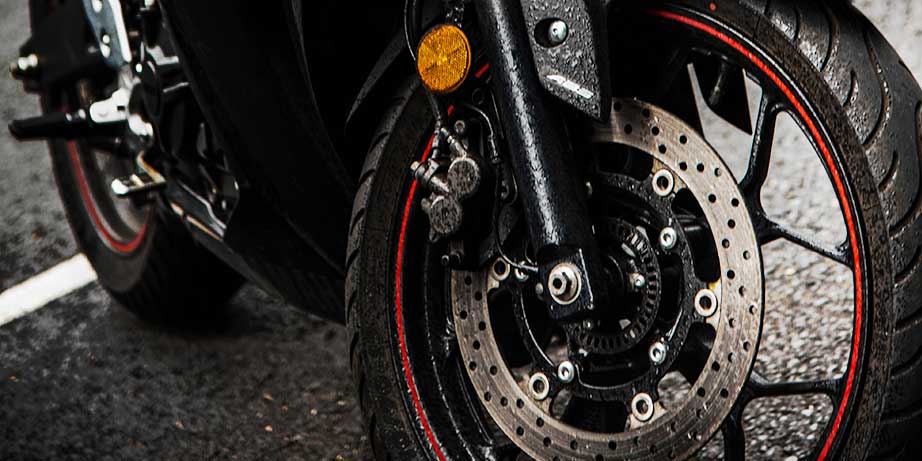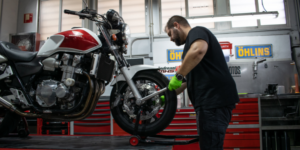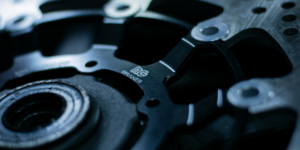In this article, we’ll try to give you some advice to efficiently brake with a motorbike that has the ABS system.
With the start of the legislation Euro 4 all the 125 cc and bigger motorbikes that are sold from now on must mount this system default.
It’s easy to distinguish on a quick look as the first thing that catches our attention is a small concentric gear aligned to the brake discs. Its functioning basically works with sensors that detect the speed and cadence of turning through the slots of this piece and it sends an impulse in milliseconds to the switchboard. This acts on the opening and closing of the callipers according its interpretation as a chain of open/close coordinated with the hydraulic part of the braking system, until it optimises a safe braking.
The braking sequence should be the following: we press the back-brake handle or pedal to generate grip power in the motorbike rear train, this lowers the rear part of the motorbike and it will avoid back wheelies. Then we press the handle of the front brake with strength and determination, we’ll feel a slight rattle and even a noise, and this is the best warning that the ABS is working. Together we release the clutch to avoid interferences with the motor.
The fact that we count on the ABS system doesn’t mean that we have to trust it 100%, we must always keep a certain safety distance from the vehicle before us, be careful to the elements in the road, extreme the cares if the braking is going to be in a curve and take into account that each ABS system is different according to the brand we’re talking about, and a period of getting used to it is needed.
A combined system of CBS and ABS gives extra security, we explain it to you in our blog, you can re-read it here.
To check all our online catalogue and choose the one that corresponds to your brand and motorbike model, you just have to fulfil the features of the motorbike itself.







